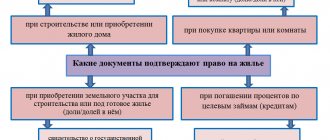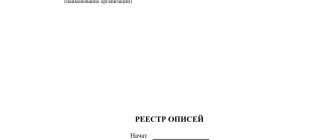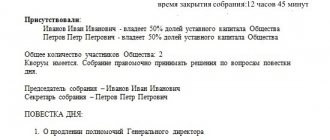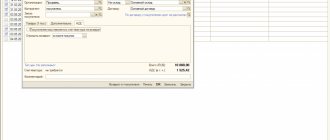It often happens at an enterprise that during the next inventory check, things that are listed in the documentation are missing. With every discrepancy, everyone starts to fuss - financially obligated, responsible people, management, and even subordinates, who are often asked. In the article we will talk about the shortage of goods and material assets (inventory) in the warehouse during inventory, and also describe how to document the posting.
Business Solutions
- shops clothing, shoes, groceries, toys, cosmetics, appliances Read more
- warehouses
material, in-production, sales and transport organizations Read more
- marking
tobacco, shoes, consumer goods, medicines Read more
- production
meat, procurement, machining, assembly and installation Read more
- rfid
radio frequency identification of inventory items More details
- egais
automation of accounting operations with alcoholic beverages Read more
All material assets, which include furniture and household appliances, documents and even office supplies, are subject to recalculation. Depending on whether the organization has been prepared, the audit can be planned (on schedule, once a month) or unscheduled. To draw up a plan, write down a schedule according to which the responsible persons recalculate.
Reasons that may affect the conduct of an unscheduled inventory reconciliation:
- any natural disaster - fire, flood, destruction, as well as fire or flooding caused by workers;
- sale of a company or acquisition of a share, emergence of a new co-founder - any changes at the management level may lead to the need to find out the exact balance;
- theft, suspicion of theft, judicial or investigative proceedings.
Thus, an audit can be initiated for various reasons. But one thing remains mandatory - an order must be issued for the procedure, specifying the date and responsible persons.
What is an inventory shortage?
The accounting department of any company is usually afraid of this term because when there is a shortage, it is much more difficult to tie up accounting loose ends than when there is a surplus. But the discovery of a shortage of products or material resources almost always occurs during an inventory of property.
A shortage of goods and materials is the lack of the required amount of money, goods or furniture, items belonging to the organization and recorded in the register. To carry out an audit, everything must first be put on the balance sheet - listed in the accounting documents. Only after these procedures can an inventory be carried out and indicators be verified.
Another feature of this process is the indication of the value of the item. If a computer is lost in a department, then employees who are financially responsible will compensate for the costs of purchasing it. Therefore, in accounting, when making an inventory, cost is always taken into account.
The pharmacy also has its own rules. Despite the fact that medications are purchased at cost, the full retail price may be withheld from the pharmacist or other person responsible for the shortage in the pharmacy when taking inventory of a person. The situation is the same with stores. This is because the shortage is considered a loss - the owner loses not only the purchase price, but also the money that he would have received upon sale.
Shortages include spoiled product, broken items, and broken dishes. Typically, this category is displayed in accounting and is posted as written off as expenses. Sometimes compensation is still required, for example, from waiters for broken glasses, since they are responsible for it. However, if the damaged goods were nevertheless sold, but at a reduced price, the shortage includes the difference between the full and final receipt.
Inventory
When a product has spoiled, or there was an extra one from somewhere, or you have a gut feeling that something is wrong, you take it and count the balances.
For a small business, in its simplest form, this is inventory. In a good way, it should be carried out regularly and the schedule should be fixed in an internal document. And to conduct it unscheduled is a “wake-up call” from intuition. For inventory to be useful, the results must be documented in a document - an inventory sheet. If you find a shortage, there is, for example, a matching sheet. You can develop your own document forms. The main thing is that the documents must contain information about whether the quantity of goods actually corresponds or does not correspond to the data in the primary documents. In the future, such statements will serve as confirmation of losses incurred. Based on the results of the inventory, a shortage of goods or a surplus may be revealed.
Reasons for the shortage
The manager should not have a negative and misunderstanding attitude towards inventory, because often people go into the red not because of poor performance of duties, but for reasons that are completely unrelated to the employees themselves. They should be taken into account. Why the balance doesn't work out:
- Theft. Proving it is often quite difficult, especially if there are no CCTV cameras.
- Emergencies - fires, floods, damaged engineering systems (electricity went out for a day, a lot of food in refrigerators spoiled).
- Costs of defects, as well as damage to goods. They don’t charge money for trying on clothes, but while putting them on, they can get dirty or torn. I have to write it off.
- Error during sale. Sometimes products, especially products without a barcode, get mixed up.
- The person who is responsible for the inventory shortage may make a mistake in the calculations and write down the wrong data.
Since all of the above reasons are presented in a different order, you should first analyze what caused the shortage. Usually all responsible persons write explanatory notes for each case.
Short delivery of a consignment of goods
An order from a supplier does not always have to arrive to the buyer at once. Art. 508 of the Civil Code of the Russian Federation allows delivery to be divided into lots, stipulating the size and delivery time of each of them. Unless terms are specifically specified, the default period is one month. In such situations, how to deal with shortfalls detected in one of the batches? The law recommends rules (Article 511 of the Civil Code of the Russian Federation), but the parties to the contract can change them and establish their own procedure:
- If there is a shortage in one of the first shipments, the supplier must make up for it in one or more subsequent shipments.
- Unless otherwise provided, the shortage must be made up before the expiration of the supply contract, otherwise a delay will be added to the shortfall.
- If the supplier makes up for the shortfall after the end of the established period, he does not have the right to demand payment for this and is even obliged to return the advance payment to the buyer, if any was given.
- If the goods were delivered to several recipients at once and there was a shortfall in one of the shipments, it is not covered by the “extra” goods shipped to another buyer - the shortfall will have to be made up by the addressee with whom the contract was concluded and to whom exactly the goods were “underdelivered” (clause 2 of Art. 511 of the Civil Code of the Russian Federation).
The procedure for registering a deficit
First, you need to collect all the documents confirming the transactions, including the inventory report and sales receipts. Based on this, a write-off order is drawn up and signed.
Otherwise, if the costs turned out to be too high or a large batch of goods was damaged, an internal investigation is carried out for negligence or theft.
Not everything is taken into account so scrupulously. There are certain categories of goods and materials that are not considered special values due to their cost, so any quantity can be recorded as expenses.
There is another option for registering a deficit - withholding from the culprit. Usually the amount is deducted from his salary. This happens in cases where guilt is proven.
Documenting
For the supplier to be liable, it is necessary to document the fact of incomplete delivery of goods. For this purpose, an act of non-delivery of goods is drawn up. If underdelivery is established directly upon acceptance of goods from the supplier or carrier, the parties must fill out a special act form - TORG-2. This document states:
- Data about the buyer: name, address, contact information, type of activity, administrative document on the basis of which the act was drawn up;
- Supplier information;
- Data on the cargo: place and date of acceptance, details of shipping documents, delivery method indicating the place of shipment, as well as data on the supply agreement indicating the invoice under which this consignment of cargo was delivered;
- Condition of transport and cargo: presence of seals on transport and cargo, type of packaging and its condition, number of packages, name of the product and its quantity;
- Information about discrepancies - filled in in the form of a table, which indicates data from shipping documents and actual acceptance indicators, the difference, positive or negative, is indicated in a separate column;
- Information about the product: name, article, unit of measurement, quantity, price and amount;
- Information about transportation and acceptance: conditions of transportation, condition of packaging, date of opening of packaging, inspection procedure;
- Information on methods for identifying shortages of goods: the procedure for determining the quantity of goods, data on the verification of measuring instruments used during acceptance, the nature of the identified discrepancies.
The act indicates the conclusion of the commission, which must contain an indication of the need to submit a claim indicating the amount of shortfall. The act is signed by all members of the commission.
The act of short delivery of goods, a sample of which is presented below, is applicable only if short delivery is detected directly upon acceptance of the cargo from the supplier. But in practice, there are often situations when the fact of incomplete delivery is revealed after some time, for example, after opening the shipping container, the absence of several units of goods is established. In such cases, the buyer must also draw up a deed. This document is drawn up in any form, but its content must take into account all the information on the identified discrepancies in the shipped goods. To draw up such an act, it is also advisable to invite a representative of the supplier, or to ensure documentary recording of the acceptance process, for example, by video recording.
Business Solutions
- the shops
clothes, shoes, products, toys, cosmetics, appliances Read more
- warehouses
material, in-production, sales and transport organizations Read more
- marking
tobacco, shoes, consumer goods, medicines Read more
- production
meat, procurement, machining, assembly and installation Read more
- rfid
radio frequency identification of inventory items More details
- egais
automation of accounting operations with alcoholic beverages Read more
How to write off shortages during inventory
Often, deterioration depends on customers, clients or natural wear and tear, time. In such cases, the registration procedure is as follows: you need to accurately calculate the loss expressed in monetary units, and then issue an order according to which this audit result should be included in the category of business expenses. In this case, you should carefully ensure that the monthly amounts do not exceed a certain norm, and also have confirmation in the form of cash receipts and explanatory notes, otherwise you may be charged with embezzlement.
There are predetermined standards, they are also called distribution costs. These include all shortages that were caused by the buyer. Let's give an example: in a grocery store, a client accidentally broke an item; he is not obligated to pay for it. But if the amount of costs exceeds the norm, then you need to look for the culprit. For example, if the entire rack was hit, then perhaps the merchandiser is to blame for not arranging the products according to the rules.
And these requirements are most strictly imposed in government agencies. In a commercial company, managers often turn a blind eye, even when standards are clearly exceeded. But in the government structure, any value is part of the state budget, so the balance there is maintained very strictly. The shortage is seen as causing direct damage to the country. In Soviet times, this could have resulted in capital punishment. If the manager gives an order to write off the shortage based on the inventory results for a larger amount than required, then the fact will be considered as misuse of public funds and embezzlement. There is criminal liability for this.
How to reflect in accounting the restoration of VAT in the event of a shortage
In accounting, tax restoration is reflected : debit account. 19.3 (19.1) - Account credit. 68.2 for the amount of tax that falls on lost property.
The restored tax amount is included in other expenses : debit account. 91.2 - Credit account. 19.1 (19.3) for the calculated amount of tax that is attributable to the lost property.
The shortfall in tax accounting must be done in the period in which the shortfall was identified , regardless of the period of purchase of the goods.
Consequences for the financially responsible person
The person responsible for inventory items writes an explanatory note addressed to his immediate superiors. This document is provided by management within two days from the date of the relevant request, usually it arrives immediately after accounting.
Based on this paper, a decision is made, which consists of writing off the company’s expenses or deducting losses from the employee. The verdict is rendered in accordance with the admission of the share of guilt by the MOL.
How to recover the shortfall from the guilty parties
The consequences can be serious, including criminal penalties + compensation for costs. Most often, management positions and senior accountants are sanctioned. The level of financial responsibility is discussed during employment and specified in the contract. Sometimes the responsibility may be collective or partial. Then the shortage is removed from all employees.
The deficit is withheld from wages. First, the result of the inspection and a conclusion on it from management with a decision on penalties are provided. Then this amount is deducted from the next paycheck. If the culprit at this moment goes through the dismissal procedure, then the debt is deducted from the last salary. If an employee refuses to pay the funds, he can be held accountable through the court.
Explanatory: how to reflect the shortage
In the document, the financially responsible person indicates, in addition to his personal data:
- when the incident occurred;
- a detailed description of the event - what happened, for what reasons, whose fault;
- the sequence of one’s own actions is an attempt to prevent an incident.
You must sign, initial and date the explanatory note.
A sample of its preparation
Shortage of goods upon acceptance. Defective goods
If the goods were delivered to you, but something was forgotten, then those lines for which there are no goods are crossed out in the invoice. Each such action is confirmed by the signature of the person who accepts the goods at the warehouse or store. And don't forget about adjusting the invoice.
If the quality of the goods differs from what is specified in the contract or accompanying documents, you need to refuse it and draw up a report on the discrepancy in quantity and quality in the TORG-2 form for domestic goods, or in the TORG-3 form for imported ones. The form is filled out by the financially responsible person in the presence of a representative of the supplier company, and with his consent, an act can be drawn up even in his absence.
If for some reason you need to return a product of proper quality, you need to fill out a TORG-12 invoice form. It is advisable to record the supplier's agreement to this in writing. For example, in the form of concluding an additional agreement to a sales contract or a separate agreement on the return of goods. They indicate the quantity and value of the goods being returned, as well as the reason for the return.
Shortage order
Based on the explanatory note, a decision must be made:
- the employee is guilty;
- innocent;
- it is necessary to assemble a commission to investigate.
As a result, a paper must be written to confirm one of the three intentions. It states:
- a brief description of the situation;
- persons involved;
- resolution.
Drafting sample
What to do if goods are not delivered. Proof of short delivery
If a shortfall in delivery of goods is detected upon acceptance, be sure to write about this in the invoice (yours and the supplier’s - and photograph both invoices), and also take a photograph of the goods (if you can determine the underdelivery from the photo) and it is very desirable that the freight carrier appears in the frame. Next, you need to immediately send a claim to the supplier’s legal address in a valuable letter with a list of attachments. When making a claim, notify about the short delivery, attach a photo and copies of the invoice. Next, convene a committee of the supplier and the buyer, which includes signing an inspection report for the goods.
Shortage in stock
Warehouses have a constant flow of inventory items, so goods are often lost here. Let's figure out why this happens.
Causes
- Lost documents or filled them out incorrectly. The invoice arrived, they issued the commodity units according to it, but did not put it in the book.
- Lack of equipment, poor accounting conditions.
- Unforeseen factors that led to damage.
- Theft.
What to do
It is worth conducting an investigation according to the above standards, that is, start by obtaining explanatory notes, then issue an order. On its basis, make either a write-off as an expense or a recovery from the culprit. We also recommend installing CCTV cameras to monitor possible acts of theft.
To restore or not to restore VAT in case of shortage?
In case of shortage of goods and materials, one should proceed from the contents of Art. 171 of the Tax Code of the Russian Federation , where an important criterion for the legality of a VAT deduction application is the use of inventory and materials for activities subject to this tax. Accordingly, if goods were initially purchased for further sale, VAT was legally claimed for deduction.
In the future, the loss of goods and materials does not make it possible to receive income from their resale (if these are goods) or to use them in activities (if these are fixed assets or materials). Accordingly, the VAT accepted for deduction on this property ceases to meet the eligibility criteria specified in Art.
Business Solutions
- the shops
clothes, shoes, products, toys, cosmetics, appliances Read more
- warehouses
material, in-production, sales and transport organizations Read more
- marking
tobacco, shoes, consumer goods, medicines Read more
- production
meat, procurement, machining, assembly and installation Read more
- rfid
radio frequency identification of inventory items More details
- egais
automation of accounting operations with alcoholic beverages Read more
How to avoid
We recommend keeping records using special devices and programs. Based on them, lists and documents are independently generated. This greatly simplifies all warehouse activities – deliveries and shipments. You can order such equipment and software at.
If your enterprise uses “1C: Accounting” in any delivery, “1C: UPP” or 1C for a construction organization, and you plan to carry out inventory only on barcodes (you will not use RFID), then a special driver for inventory is completely suitable for you from Cleverens, the delivery package of which includes all the programs and processing necessary both for printing labels and for working with the data collection terminal.
If you are using 1C, but you plan to implement RFID, then another program is suitable for you - Cleverence: Property Accounting. Also, there are software products for stores and warehouses that will help optimize and automate inventory accounting, as well as eliminate cases of shortages during inventory.
See how Shop 15 helps automate the inventory process in a chain of building materials hypermarkets. As a result of implementation, the process became much simpler and made it possible to abandon the involvement of outsourcing companies.
What could cause a shortage of goods?
In accordance with Art. 233 Order of the Ministry of Finance of Russia dated December 28, 2001 No. 119n (as amended on October 24, 2016) “On approval of the Guidelines for accounting of inventories” (Registered with the Ministry of Justice of Russia on February 13, 2002 No. 3245) losses and shortages of goods may occur in the following cases:
| Cases of identifying shortages of goods | A comment |
| Detection upon acceptance of goods from the supplier |
|
| Identification of shortages in a non-trading organization during inventories and inspections |
|
| Loss of goods due to accidents, fires and natural disasters | |
| Loss of goods from containers | |
| Waste generation |
If a shortage is detected, the following accounting entry must be made:
| Debit (Dt) | Credit (Kt) | A comment |
| 94 | 41 | Identifying shortages during inventory counting |
If a shortage is detected in a category of retail goods:
| Debit (Dt) | Credit (Kt) | A comment |
| 41.11 (41.12) | 42 | Write-off of markup |
If a shortage is detected as a result of natural loss:
| Debit (Dt) | Credit (Kt) | A comment |
| 96 | 94 | Writing off shortages of reserve resources |
| 44 | 94 | Write-off of shortages (no reserve) |








